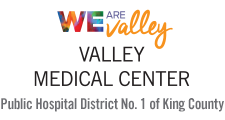Clinician Coaching Tip o' the Month - April 2024
Patient Perceptions: How Effective Communication Shapes Healthcare Experiences
Communication is essential, not just between clinician and patient, but also across the entire healthcare team. While observing other clinicians, I've noticed a common practice of asking patients what brings them in today or how we can help them. This approach does not instill much confidence in patients, especially those who have already been to urgent care or seen another provider before being referred to you. Moreover, they have already discussed their reason for the visit during scheduling and with the MA while being roomed. In this age of the EMR, it can be frustrating for patients to feel like their provider is unaware of why they are there.
We often have at least a basic understanding of the patient's reason for the visit, and it's important to convey this to the patient. For example: "Hello, I see that you're here today for lower back pain. Victor (MA) mentioned that you're quite uncomfortable, describing your pain as 7 out of 10. I reviewed your chart earlier and noted that you were seen in the Emergency Department last week. The clinician's notes indicate that X-rays were performed, diagnosing you with lumbar radiculopathy. Two medications were prescribed, and it was suggested you might need physical therapy. They referred you to us. Am I on track so far? What else would you like me to know about this problem? I also have a few specific questions that will help us target the underlying issue behind your symptoms. After that, we can review the X-ray images together if you're interested, and then I'd like to conduct my own examination, if that's alright with you."
The example above demonstrates how effective and efficient communication can be achieved with the patient while still obtaining a focused history directly from them. This approach shows great respect for the patient by doing background preparation and communicating it effectively. They don't have to repeat the entire history of their illness again, which streamlines the process for both the patient and you as their healthcare provider. Also the patient's perception of the quality of their interaction with you is positively correlated with the communication you had with the other members of their healthcare team.

